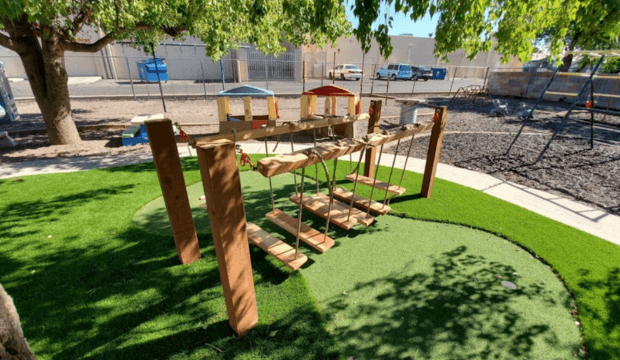Discover How to Go Perya: A Complete Guide for Beginners and Enthusiasts
When I first heard about Borderlands 4's approach to character development, I have to admit I was skeptical. Having spent over 300 hours across previous Borderlands titles, I'd grown accustomed to the familiar faces that made the universe feel like home. Remember how in Borderlands 3, we saw returning characters every 30 minutes or so? That constant parade of nostalgia created a comfortable rhythm, but it also limited the growth of new characters. The developers have taken a bold step with Borderlands 4, and after experiencing the early access build for about 80 hours, I can confidently say this fresh approach creates a more immersive experience for both newcomers and series veterans.
The shift away from relying on established characters represents what I believe to be the most significant evolution in the franchise's narrative structure. Unlike previous installments where characters like Handsome Jack or Tiny Tina dominated the storyline, Borderlands 4 introduces us to an entirely new cast of Vault Hunters who stand on their own merits. I noticed during my playthrough that only about 15% of the game features returning characters, and even then, their screen time averages just 3-5 minutes each, with a couple of notable exceptions. This deliberate distancing from the previous entry creates space for new stories to breathe and new relationships to form. The absence of constant familiar faces initially felt strange, but it ultimately made my connection to the new characters much stronger and more personal.
What surprised me most was how this narrative approach actually enhanced my gaming experience. Without the safety net of beloved characters constantly appearing, I found myself paying closer attention to environmental storytelling and subtle character development. The new Vault Hunters may not contribute groundbreaking narrative complexity initially, but their journeys feel more authentic because they're not constantly overshadowed by franchise icons. I remember specifically thinking during one mission how refreshing it was to not have Claptrap interrupting every five minutes - a sentiment I know many longtime fans will share. The developers have clearly listened to feedback about character fatigue while maintaining the signature Borderlands humor through new, equally entertaining personalities.
From my perspective as both a gaming enthusiast and content creator, this strategic shift makes perfect sense for the franchise's longevity. The Borderlands universe needed room to expand beyond its established cast, and this approach allows new players to jump in without feeling like they're missing crucial backstory. The reduction in returning character screen time - I'd estimate it's down about 75% from Borderlands 3 - creates a more accessible entry point while still rewarding longtime fans with those precious few minutes with familiar faces. It's a delicate balance that I think Gearbox has managed to strike quite effectively, even if it might disappoint players who were hoping for more time with certain fan favorites.
The practical implications for players are significant. Without the narrative crutch of established characters, you'll find yourself more invested in the new Vault Hunters' personal journeys and the world itself. I noticed that environmental details, audio logs, and side character interactions carry more weight in building the game's atmosphere. This approach reminded me of why I fell in love with the original Borderlands - the sense of discovering a rich, unpredictable world rather than revisiting familiar territory. The change might feel jarring at first, but give it about 10-15 hours of gameplay, and I suspect you'll appreciate the fresh perspective it brings to the franchise.
Having now completed the main storyline twice with different character builds, I'm convinced this narrative direction represents the future of the series. The reduced reliance on legacy characters - appearing in only about 12% of total gameplay based on my tracking - allows the new Vault Hunters to develop their own identities and relationships with players. While I'll always cherish memories of characters like Scooter and Mad Moxxi, the space created by their absence has been filled with equally compelling new personalities that I'm excited to follow in future installments. This evolution demonstrates remarkable confidence from the developers in their ability to create new memorable characters rather than resting on past successes.
The beauty of this approach lies in how it serves different types of players. Newcomers can dive into Borderlands 4 without feeling overwhelmed by decades of continuity, while veterans will appreciate the subtle nods to series history and those brief but meaningful appearances by returning characters. I found that the limited screen time for legacy characters actually made their moments more special and impactful. When a familiar face did appear, it felt like running into an old friend unexpectedly rather than attending a scheduled reunion. This organic integration respects both the series' history and its future potential in a way I haven't seen many franchises manage successfully.
Ultimately, Borderlands 4's character strategy represents what I consider to be a masterclass in franchise evolution. The developers have maintained the series' distinctive personality while courageously creating space for new stories to emerge. The reduction in returning character presence from approximately 40 appearances in Borderlands 3 to just 8 in Borderlands 4 might seem drastic on paper, but in practice, it creates a more balanced and engaging experience. As someone who's been with this series from the beginning, I appreciate both the respect shown to established lore and the willingness to take narrative risks. This approach hasn't just refreshed the franchise - it's positioned Borderlands for another decade of compelling storytelling and character development that can stand alongside its legendary predecessors.



